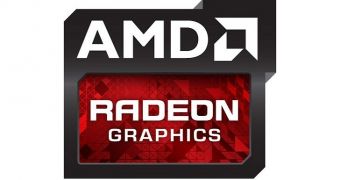Some of you may remember that, last week, AMD cut the prices of its Radeon R9 series of video cards massively, and that led to suspicions that, among other things, a new GPU or range of GPUs was approaching. Now we have the first signs that those suspicions were valid.
We can't say concrete, or endorsed by AMD itself, but you're in luck because certain other parties have decided to leak some info.
Specifically, the folks at VideoCardz state that Advanced Micro Devices is working on a new graphics processing unit, a unit that could power a Radeon R9 275X video board.
Said GPU would power mid-range video cards on the same level as NVIDIA's GeForce GTX 750 and GTX 750 Ti adapters. Thus, the new chip will be AMD's answer to the GM107 Maxwell.
The GPU name is said to be Tonga, after an archipelago of islands. The chip could, technically, be part of Pirate islands, but the volcanic activity in the area is significant as well, so it could end up as a Volcanic Islands chip too.
In theory, it would make sense for the newcomer to be classified as a Pirate Islands chip, since that is the range of processors scheduled for 2015. The next generation as it were.
NVIDIA's GM107 is a Maxwell unit after all, with Maxwell slated to come out in force near the end of the year, or early 2015.
Moreover, AMD will not be relying on TSMC for the production of the Tonga, instead ordering it from Globalfoundries.
Given TSMC's latest bomb, which resulted in the delay of the 20nm manufacturing technology, neither NVIDIA nor AMD can release their next-generation chips as planned.
Indeed, it's not clear if the two rivals are going to postpone their units (unlikely) or if they will redesign them for 28nm instead.
The Tonga will be a 28 nm chip, just like GM107 is for NVIDIA's Maxwell series, but the plans for the rest of the chips are still up in the air.
Nevertheless, the processor named after the 176-island archipelago will have a much lower power consumption than the existing series, plus PowerTune Boost (a hardware-level OC/ energy managing technology).
Moreover, XDMA CrossFire and TrueAudio technologies will be supported (the current generation has them after all), as will the Mantle Application Programming Interface.
Finally, in the true fashion of Pitcairn/Curacao replacements, the Tonga GPU will be backed by only 2 GB of GDDR5. It is remarkable how 2 GB is considered “low” now.

 14 DAY TRIAL //
14 DAY TRIAL //